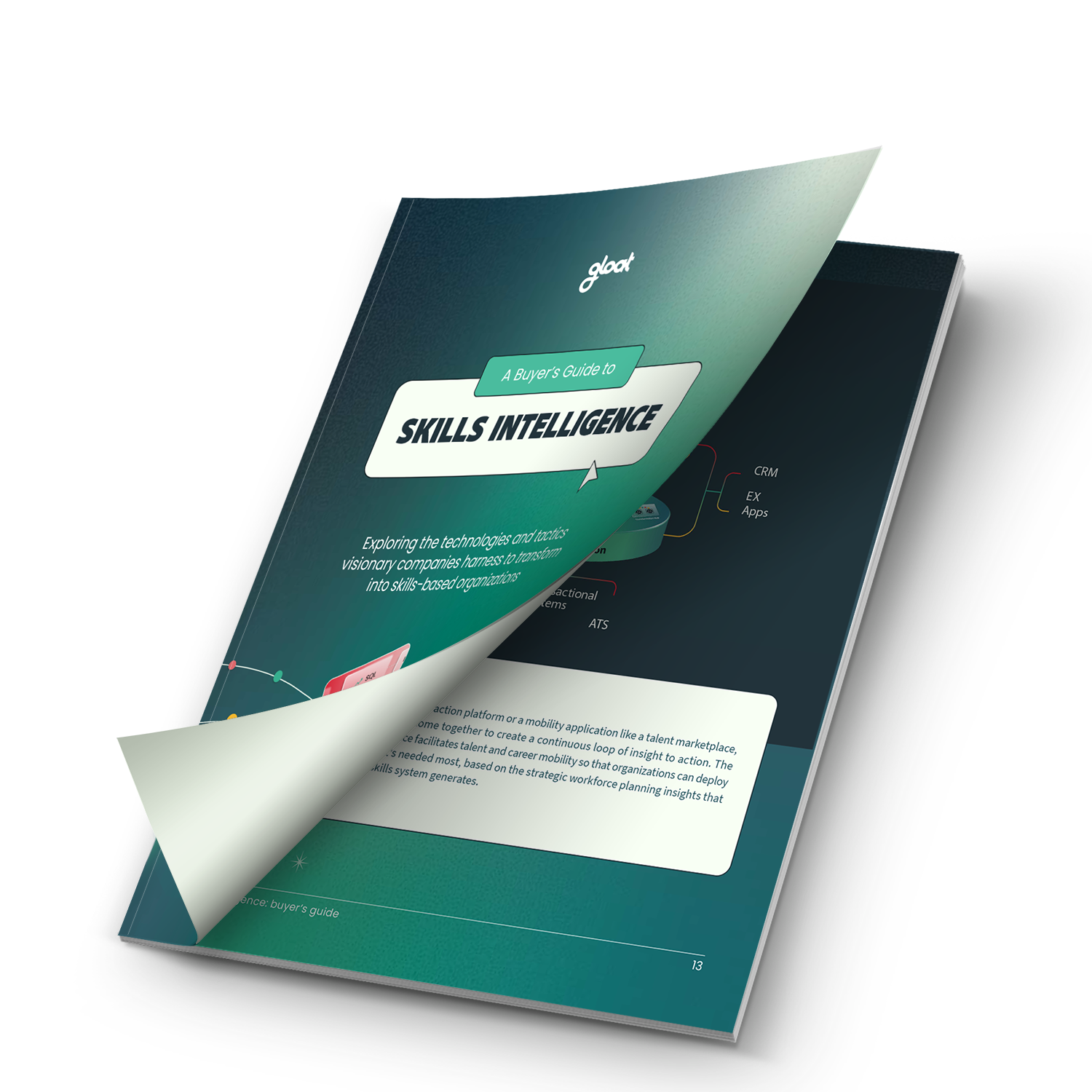3 ways visionary leaders are leveraging skills data to transform their organizations
Find out how to use skills intelligence to your organization’s advantage There’s plenty of talk about the benefits of transforming into a skills-based organization. Josh Bersin’s latest research reveals that companies that embrace skills-based strategies as part of their journey to become Dynamic Organizations are 3X more likely to surpass financial targets and 5X more

Find out how to use skills intelligence to your organization’s advantage
There’s plenty of talk about the benefits of transforming into a skills-based organization. Josh Bersin’s latest research reveals that companies that embrace skills-based strategies as part of their journey to become Dynamic Organizations are 3X more likely to surpass financial targets and 5X more likely to adapt well to change.
But, despite these impressive business-wide outcomes, many companies are struggling to get their skills initiatives off the ground. The same research from Josh Bersin identifies a lack of skills data as a recurring obstacle along many organizations’ transformation journeys, with just 6% of companies reporting that they have a system for real-time skills insights.
While accessing data on workforce capabilities was once exceptionally challenging, a new generation of talent marketplaces and skills intelligence tools promise to put these insights at leaders’ fingertips. The visionary companies that are already harnessing these systems have impressive results to show for it—including improved talent mobility and better workforce planning decisions.
What is skills data and why is it essential for workforce planning?
As the name suggests, skills data refers to any information about your workforce’s capabilities, such as a skills inventory or a skills assessment that measures an employee’s proficiency in a given field. Skills data has traditionally been siloed into disparate HR systems, making it virtually impossible for leaders to gain a single source of truth to break down the skills their people have and the knowledge they need.
In order to identify and address gaps between current and projected workforce requirements, companies need comprehensive data about the skills their people have. While organizations in the past could count on relatively stable market conditions to predict employee skill needs, those comforts don’t exist today. Modern workforce planning must account for a myriad of factors including shifting demographics, global supply chain disruptions, accelerated technological innovations, and evolving skill needs. Without comprehensive skills data that is updated and accurate, leaders won’t have the insights needed to make important decisions about talent management and hiring.
How technological innovations are upgrading skills data
Now that skills-based strategies are coming into focus, leaders are increasingly turning to a new generation of AI-powered skills intelligence tools like Gloat’s Skills Foundation to take stock of the knowledge their people possess. Skills intelligence tools bring all of an organization’s skills data into one place, giving leaders a unified view of what skills exist and where they sit that updates automatically.
Rather than making skills and job planning a manual process, skills intelligence tools make it easier to identify transferable skills and roles so leaders can strategically restructure and redeploy with confidence. The most comprehensive offerings also include skill benchmarking so executives can measure employees’ skills and connect to an action platform like a talent marketplace, which matches people to open opportunities based on their capabilities and career goals.
3 ways visionary leaders are using skills data to transform their organizations
Once leaders gain insight into their workforce’s skills, they’ll be equipped with the insights needed to uncover talent with in-demand capabilities and make the right talent-sourcing decisions. During Gloat Live, several visionary executives shared how skills data is leveling up their approach to workforce planning, including the following anecdotes:
#1. Making strategic talent acquisition decisions
One of the most common workforce planning challenges leaders face is deciding which roles they will need to hire externally for and identifying when there are employees who can be reskilled to step into these high-priority positions. Standard Chartered Bank’s Global Transformation Head Nina Santana-Sweeney breaks down how improved skills data has improved talent acquisition decisions at her organization, noting, “Having a talent marketplace allows us to do a lot of things with the data we produce. If we make a case that we don’t need to be hiring all of these people because we have a lot of people we can quickly upskill to get the job done, it changes the conversation.”
Chief Strategy and Talent Officer Tanuj Kapilashrami elaborates on some of the insights that her organization has gleaned through their comprehensive skills data. “We saw that in the coming years, 12,000 jobs were going to go away and about 5,000 new jobs were going to come up,” she explains. “And then we basically said to pivot our workforce over the next five years, what is it going to cost us? That’s when I could see my CFO’s eyes light up because the data said it’s going to be cheaper for us to reskill and redeploy versus hire externally.”
#2. Uncovering internal talent with in-demand skills
Without complete insight into your workforce’s skills, it’s virtually impossible to see all of the capabilities that your people are bringing to the table. Every employee is capable of so much more than what they were hired for, but without updated skills data, some of their potential will inevitably go untapped.
Mastercard’s Chief People Officer Michael Fraccaro explains how the launch of Mastercard’s talent marketplace enables leaders to identify employees with in-demand skills in areas of the business they hadn’t previously considered. “[Launching our talent marketplace] was about connecting people to these priceless career opportunities. And we said, ‘Wow, we’ve just been able to find talent with particular skills in parts of the organization that we didn’t even know.’”
#3. Breaking down silos and cultivating an unbossed culture
“The access to data we have now is so much better. With the approach that we have now, in two months we get more quality data about our people than we did in four years with the former approach,” explains Markus Graf, Global Head of Talent, when describing Novartis’s transformation.
Beyond improving workforce planning, Graf describes how these comprehensive skills insights have helped the leading pharmaceutical company cultivate a more empowered culture, which they refer to as “unbossed”. In his words, “Culture and technology reinforce each other. You can’t match talent to opportunities at scale without technology. For us, it was very clear that we wanted to bring this idea of an unbossed culture to life and that’s where the talent marketplace really helps.”
To learn more about the latest technological innovations that are equipping leaders with better insights into their workforces’ capabilities than ever before, check out our skills intelligence buyer’s guide.





